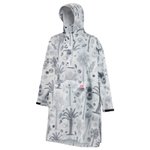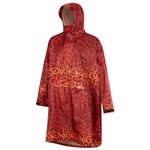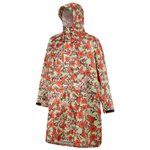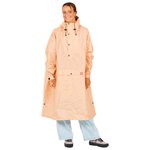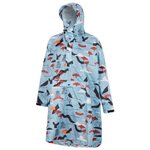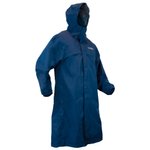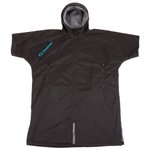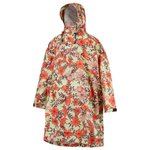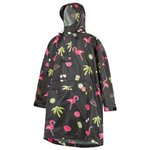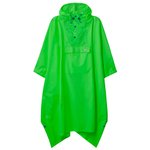Rain capes
Why and How to Choose a Rain Poncho?
Anyone who hikes occasionally or regularly knows it’s always better to be prepared and carry gear to protect yourself from the rain. Sure, getting caught in a summer shower can feel refreshing, but only if it’s light, brief, and not the first signs of a storm. To avoid the inconvenience of dealing with unpredictable weather—especially common in the mountains—it’s best to gear up appropriately. Among the different solutions available for staying dry, the rain poncho stands out as one of the most effective. Contrary to appearances, it’s easy and quick to slip on over a fleece jacket, a hiking jacket, or even directly over a t-shirt or a hiking shirt for those less prone to the cold. Some models can even cover your entire hiking backpack. To help you make the right choice, here’s everything you need to know to stay dry.
Read more Show less
 Sale
Sale
-
Recommended price
£69.51
-50%
£34.71

 Sale
Sale
-
Recommended price
£69.51
-50%
£34.71

 Further reductions
Further reductions
-
Recommended price
£52.11
-30%
£36.45
The Oxsitis Cirrus Marine is a 5K waterproof polyester rain poncho, designed for athletes, featuring easy flask access, adjustable hood, underarm openings, and can cover a 40L backpack.
- XS
- S-M (80-100)
- L-XL (100-120)

 Sale
Sale
-
Recommended price
£69.51
-50%
£34.71

 Sale
Sale
-
Recommended price
£69.51
-50%
£34.71

 Sale
Sale
-
Recommended price
£69.51
-50%
£34.71

 Sale
Sale
-
Recommended price
£69.51
-50%
£34.71

 Sale
Sale
-
Recommended price
£69.51
-50%
£34.71

 Sale
Sale
-
Recommended price
£69.51
-50%
£34.71

 Sale
Sale
-
Recommended price
£69.51
-50%
£34.71

 Sale
Sale
-
Recommended price
£69.51
-50%
£34.71

 Further reductions
Further reductions
-
Recommended price
£121.71
-50%
£60.81
-
- S-M
- L-XL

 Sale
Sale
-
Recommended price
£56.46
-50%
£28.19
The After Essentials Rain Poncho Kids Paradise is a rain poncho that provides effective moisture protection to keep you dry in bad weather.

 Sale
Sale
-
Recommended price
£56.46
-50%
£28.19
The After Essentials Rain Poncho Kids North Shore is an eco-responsible children's rain poncho that uses recycled polyester in its manufacture.

 Further reductions
Further reductions
-
Recommended price
£52.11
-40%
£31.23
Loading...
What is the Best Garment for Staying Dry on a Hike?
There are several types of rain gear available, each coming in various forms:
- Rain Poncho (or Cape): Like the iconic Mexican ponchos, rain ponchos are slipped on over the head. They provide great freedom of movement and are equipped with a hood to keep your head dry. They’re roomy enough to also cover your backpack.
- Rain Jacket: While these only protect your upper body, they also guarantee excellent mobility. In addition to being waterproof, they are generally breathable and windproof. However, during heavy or prolonged rain, water can run down to your thighs. Adding rain trousers to your outfit will protect your legs.
- Cloak: Unlike a poncho, a cloak traditionally features sleeves. It’s also slipped on over the head, comes with a hood, and is roomy enough to protect your backpack.
- Rain Trousers: These complement your rain gear by protecting your legs, an essential feature during heavy downpours.
- Rain Gaiters: They shield your hiking shoes and the lower part of your trousers. They also protect against snow during snowshoe hikes.
Each of these garments is designed to provide maximum protection against moisture, with features suited to hiking and even cycling—especially if you commute in urban areas to go to work, drop off your children at daycare or school.
A rain poncho is ideal for bad weather during hikes. Rain ponchos and capes shield you from the elements with their loose fit. They’re often one-size-fits-all, making them usable by a wide range of hikers. A poncho is easy and quick to slip on over your hiking jacket, providing protection from the first drops during a sudden shower. Weather can change quickly when hiking, especially in the mountains, making a rain poncho an essential item for every hiker. On this page, explore a wide selection of ponchos with hoods and sleeves, made from waterproof, windproof, and breathable materials.
Poncho, With or Without Sleeves? What’s the Difference Between a Cloak and a Poncho?
The difference between a poncho and a cloak is simple: the former is sleeveless, while the latter has sleeves. Both offer the same great freedom of movement. They’re both slipped on over the head and are generally roomy enough to fully cover the hiker and their backpack. Cloak sleeves have the added benefit of keeping your arms dry when using trekking poles. Since the term cloak has largely fallen out of common use, rain ponchos with sleeves are often also referred to as ponchos or capes. Don’t stress over the terminology—just choose the rain garment best suited to your needs and activity.
Poncho, Cape, Cloak, or Rain Jacket: The Best Option for Hiking
Choosing between a poncho and a rain jacket depends on your specific needs and activities.
Advantages of the Poncho (or Rain Cape)
- Extensive Coverage: Unlike a rain jacket, a poncho covers a larger part of the body, including the legs and possibly your backpack.
- Convenience: Easy to slip on, ponchos are suitable for both short and long hikes. They can be worn pre-emptively when rain is expected or put on quickly when it starts raining. Once folded, they’re compact and often fit into a kangaroo pocket, making them easy to stow in your backpack for unexpected showers.
- Lightweight: Rain ponchos are light and breathable, making them comfortable even over long distances. Some hikers use a cord or belt to secure the poncho around the waist in windy conditions to prevent it from flapping.
- Versatility: Ponchos (or rain capes) are suitable for both men and women and can be used for other activities like bike commuting or backpacking.
Disadvantages of the Poncho or Rain Cape
- Fit: Some hikers find the wide fit of a poncho cumbersome, making it harder to see where they’re stepping. In windy conditions, ponchos can lift, reducing their protection and comfort. Securing the poncho with a belt can prevent this.
- Breathability: While excellent at keeping you dry, ponchos are often less breathable than rain jackets designed specifically for hiking, leading to clamminess during intense activity.
The Rain Coat: An Alternative with Its Own Pros and Cons
Rain jackets have the advantage of a fitted design, ideal for walking. Unlike a poncho, a jacket doesn’t billow in the wind and allows complete freedom of movement. Most models feature a waterproof-breathable membrane that keeps moisture out while wicking sweat away. Their versatility also makes rain jackets more suitable for everyday wear. However, for hiking or regular bike commutes, ponchos or cloaks provide better overall protection. Their loose fit fully envelops the hiker or cyclist, often covering the backpack, ensuring its contents stay dry, unlike rain covers that can sometimes fail.
Poncho or Jacket: Which Rain Gear to Choose for Cycling?
The rain poncho is ideal for urban commutes in the rain, thanks to its ability to shield both the cyclist and their gear. For longer rides or more intense activities, a rain jacket designed specifically for cycling is a better choice due to its tailored fit and breathability.
For maximum protection, pair these garments with waterproof trousers to stay perfectly dry even during heavy rain. Whatever your choice, bad weather will no longer be an excuse to leave your bike in the garage.
How to Fold a Rain Poncho?
When folded, a poncho can fit into a small pocket, making it easy to store in your backpack. Here’s how to fold it easily:
- Lay your poncho flat.
- Fold the sides toward the centre to create a rectangle.
- Fold the rectangle as many times as needed to fit its storage pouch.
- Store the poncho in its pouch or a waterproof bag to keep it from dampening other items in your backpack.
With a little practice, this will become second nature on the trail.


